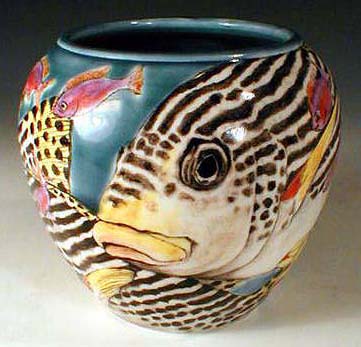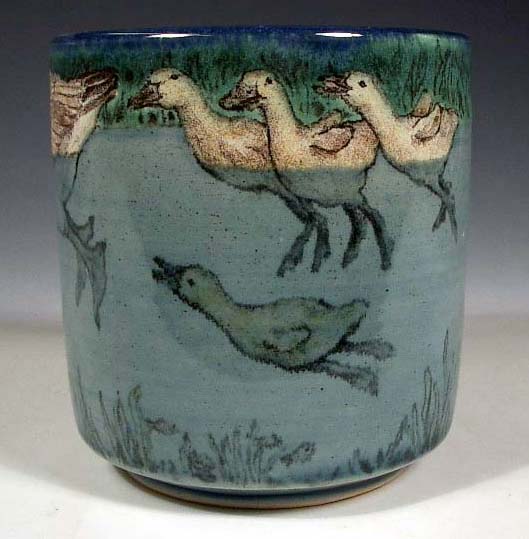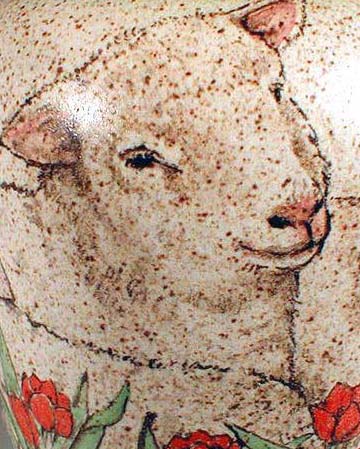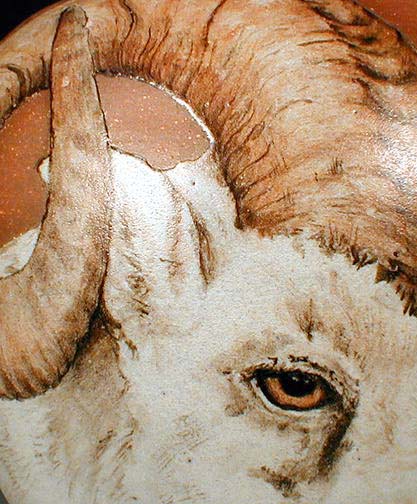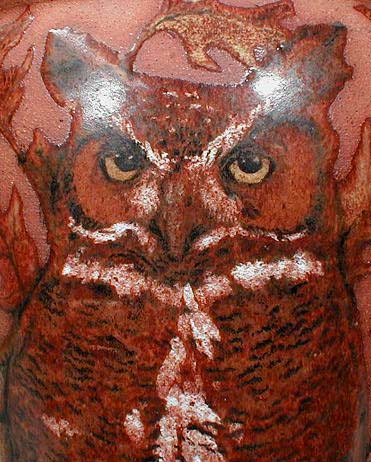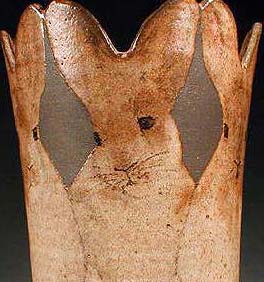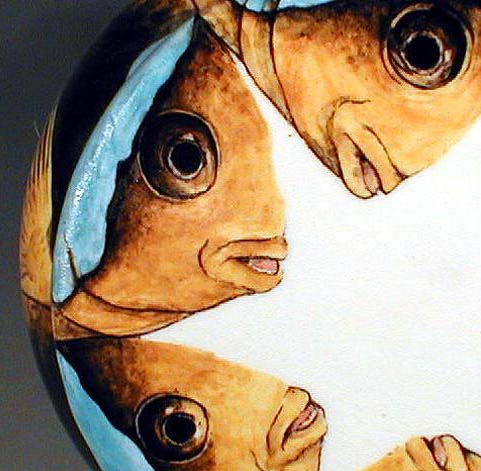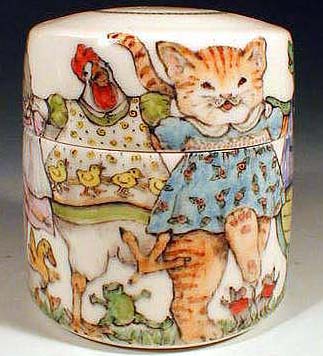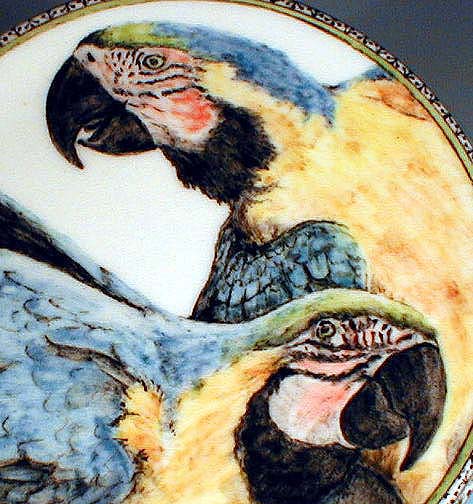Generally speaking, there are three kinds of clay: earthenware, stoneware, and porcelain. Earthenware is the most fragile because when it's fired to maturity (the highest temperature before things start to go wrong, like blistering, slumping, etc.) it remains porous, or unvitrified. Stoneware and porcelain, fired at higher temperatures, vitrify when mature and, for the most part, are no longer porous. The clay body is tighter and this makes it more durable. Given the time I spend on each piece, I want my work to last as long as possible. I use stoneware.
The clays we use at Mudville are cone 6 clays, mostly from Laguna Clay. I use grolleg porcelain and a number of different stonewares, a speckled tan, an unspeckled tan, a cream, a white, two different reds and a black. The clay you choose makes a substantial difference in the end result.
|
